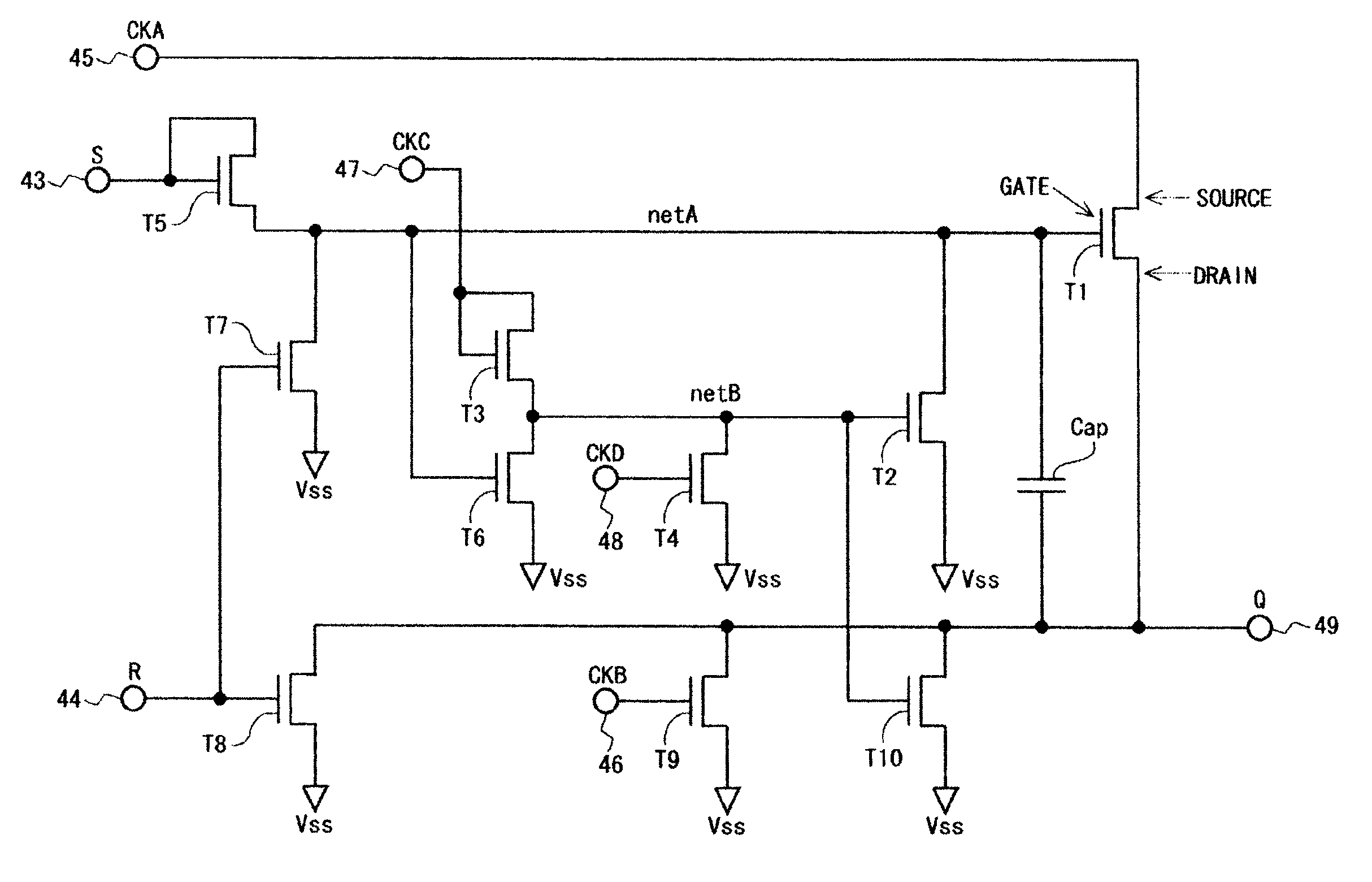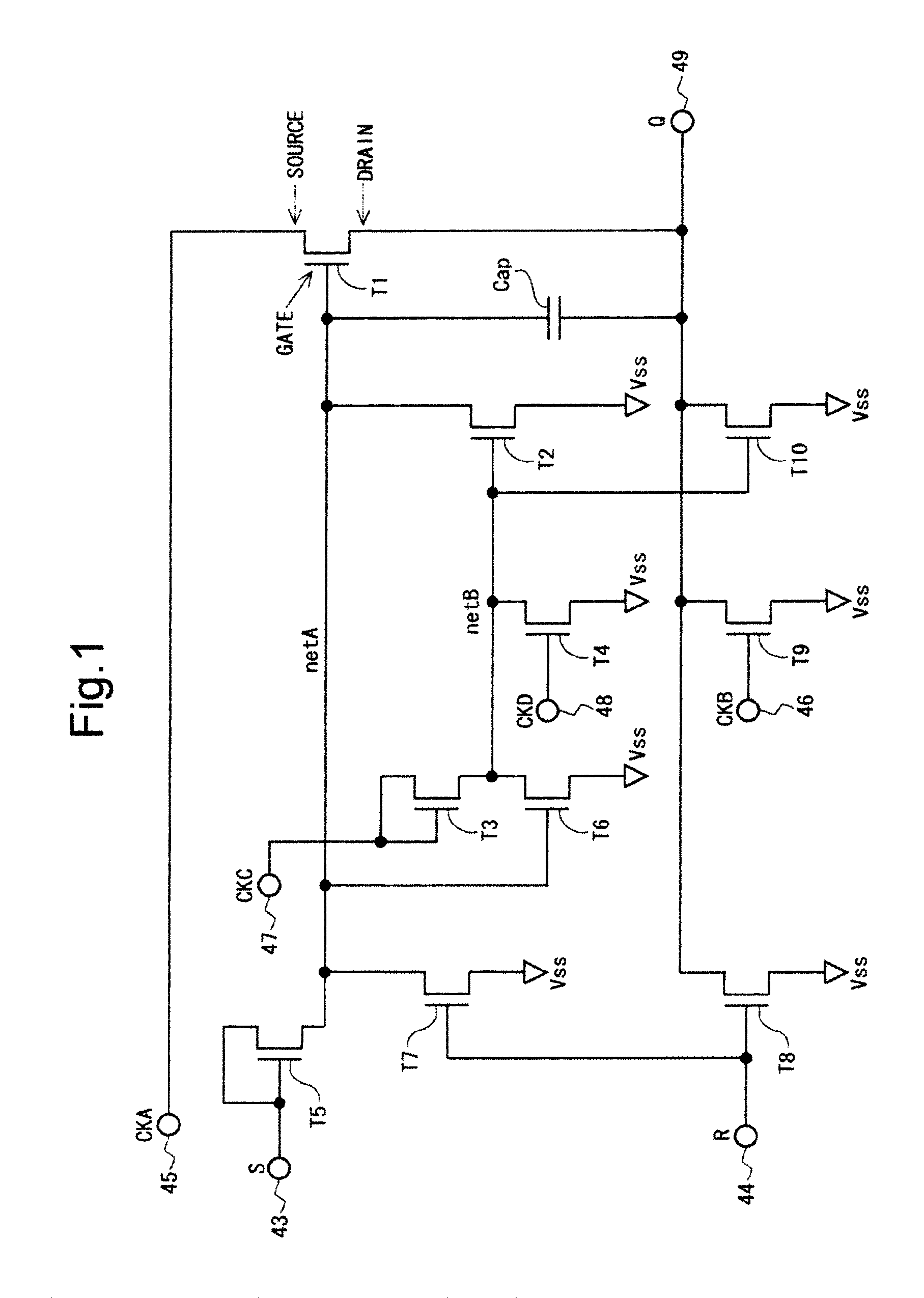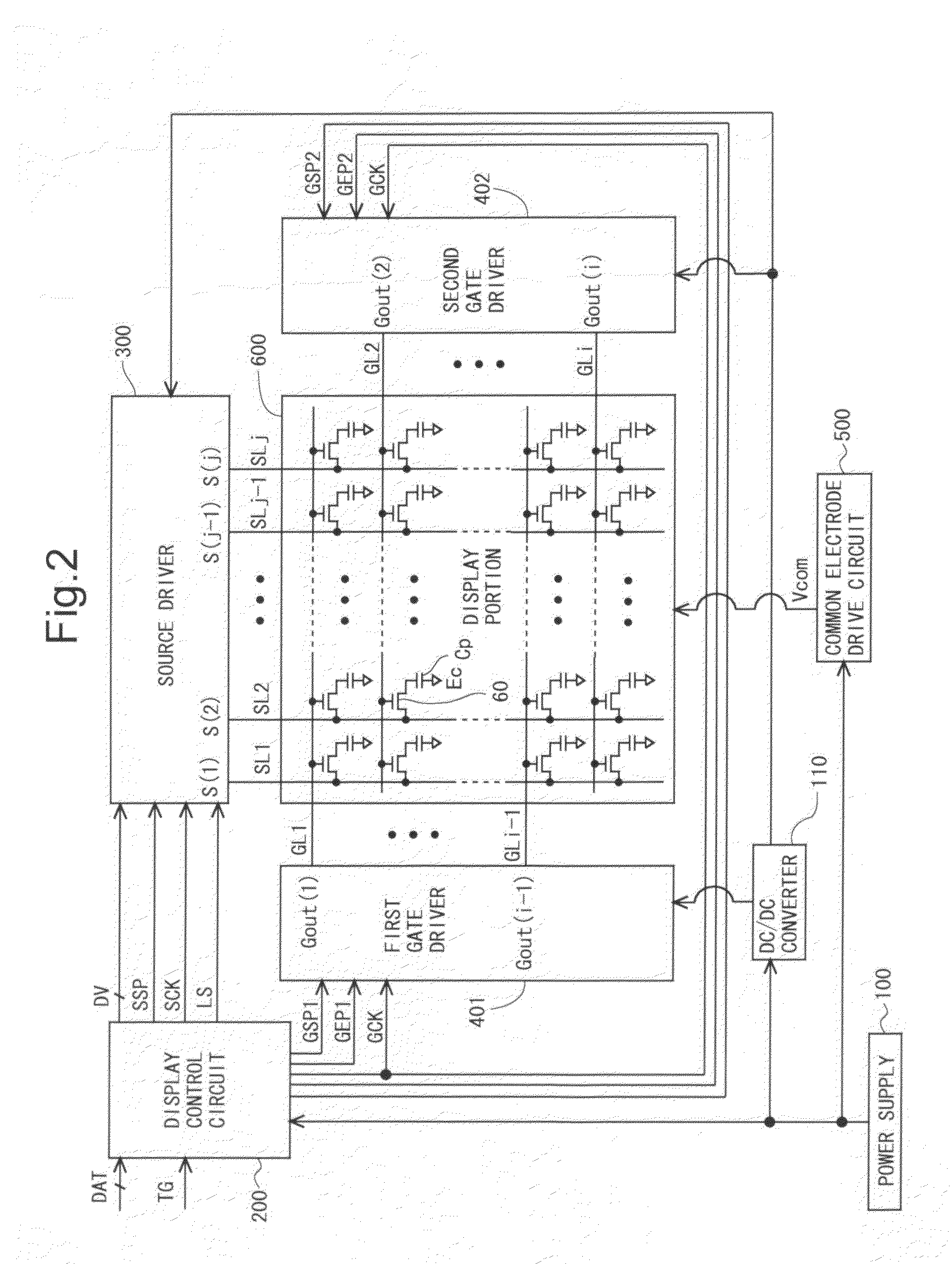Scanning signal line drive circuit, shift register, and drive method of driving shift register
a drive circuit and signal line technology, applied in the direction of digital storage, instruments, computing, etc., can solve the problem of not being able to transfer video signals indicating pixels, etc., to reduce the size of the first switching element, reduce power consumption, and reduce the effect of siz
- Summary
- Abstract
- Description
- Claims
- Application Information
AI Technical Summary
Benefits of technology
Problems solved by technology
Method used
Image
Examples
Embodiment Construction
[0198]One embodiment of the present invention will be described below with reference to the attached drawings. In the following description, with regard to a thin-film transistor, a gate terminal (a gate electrode) corresponds to a first electrode, a source terminal (a source electrode) corresponds to a second electrode, and a drain terminal (a drain electrode) corresponds to a third electrode.
[0199]
[0200]FIG. 2 is a block diagram showing a general configuration of an active matrix-type liquid crystal display device according to one embodiment of the present invention. As shown in FIG. 2, this liquid crystal display device includes a power supply 100, a DC / DC converter 110, a display control circuit 200, a source driver (a video signal line drive circuit) 300, a first gate driver (a first scanning signal line drive circuit) 401, a second gate driver (a second scanning signal line drive circuit) 402, a common electrode drive circuit 500 and a display portion 600. Typically, the displ...
PUM
 Login to View More
Login to View More Abstract
Description
Claims
Application Information
 Login to View More
Login to View More - R&D
- Intellectual Property
- Life Sciences
- Materials
- Tech Scout
- Unparalleled Data Quality
- Higher Quality Content
- 60% Fewer Hallucinations
Browse by: Latest US Patents, China's latest patents, Technical Efficacy Thesaurus, Application Domain, Technology Topic, Popular Technical Reports.
© 2025 PatSnap. All rights reserved.Legal|Privacy policy|Modern Slavery Act Transparency Statement|Sitemap|About US| Contact US: help@patsnap.com



